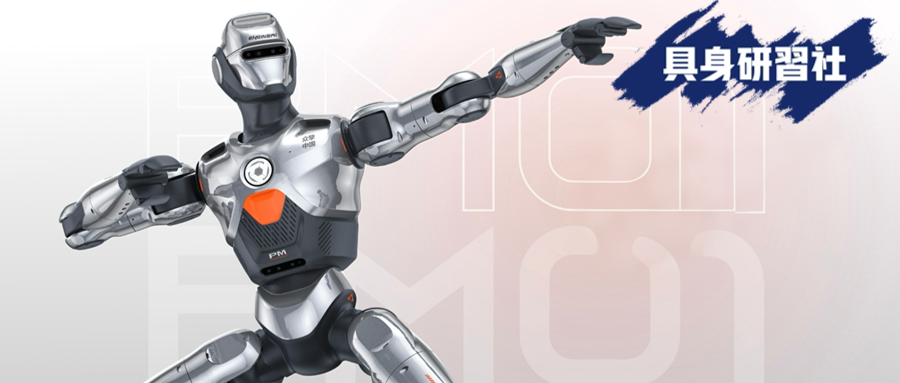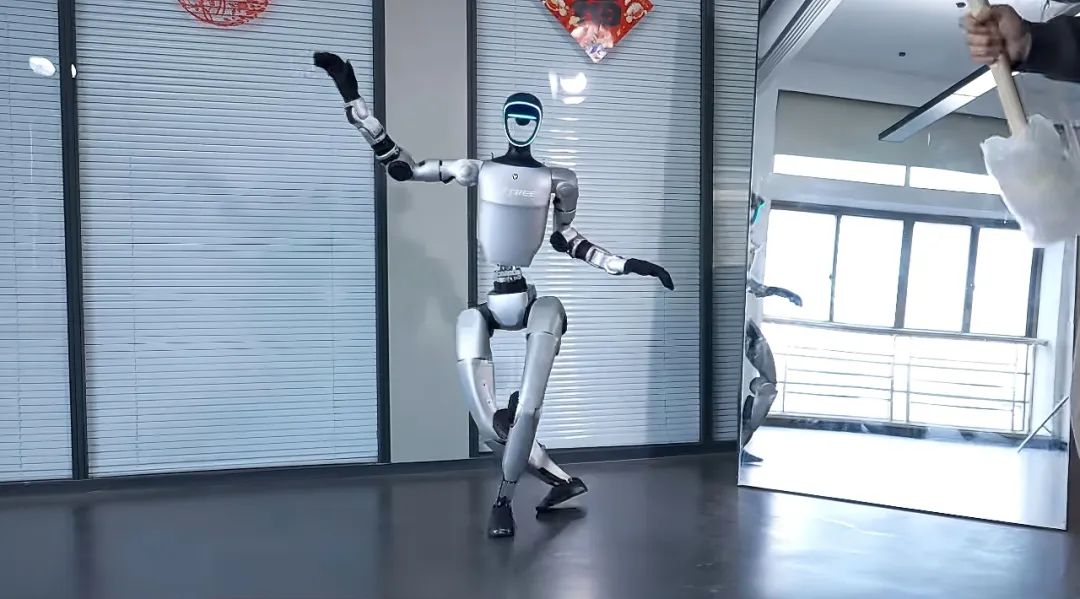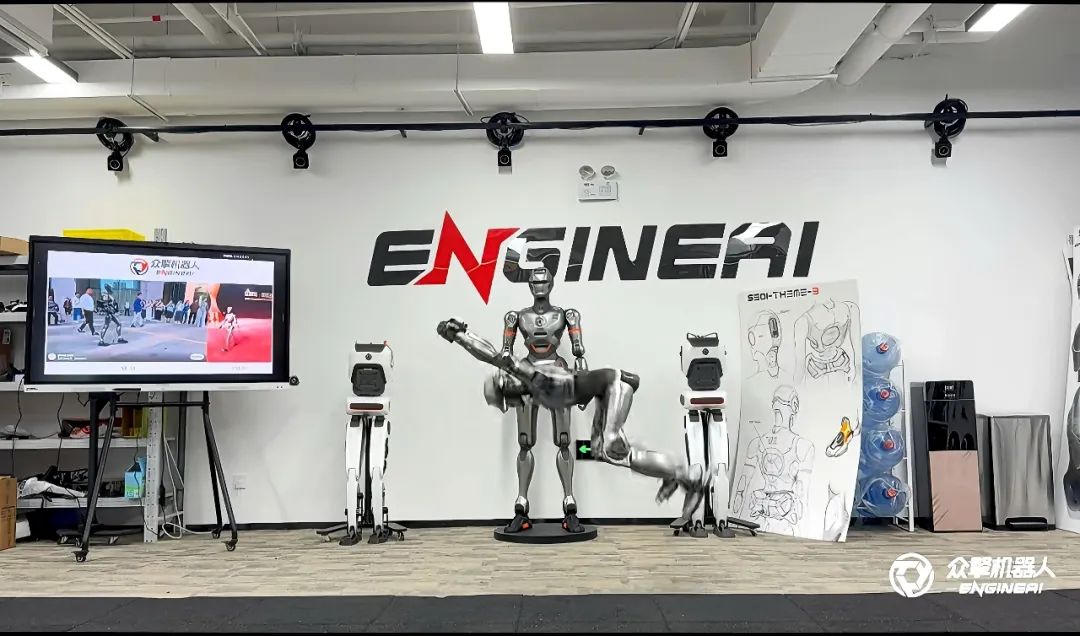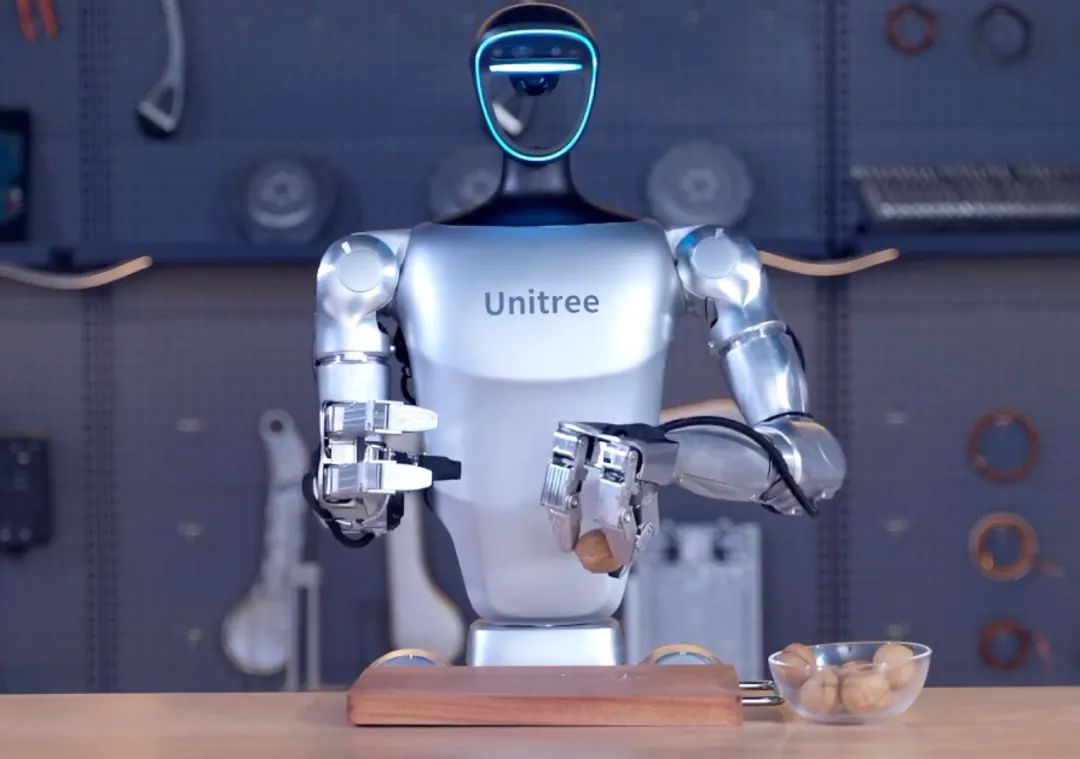Is the Label of "Film and Television Special Effects Production Company" a Boon for Unitree and Zhongqing?
![]() 04/30 2025
04/30 2025
![]() 558
558

From Unitree yesterday to Zhongqing today, and tomorrow, another humanoid robot company will be labeled a "film and television special effects production company." Amidst the anticipation of a technological singularity, skepticism and ridicule are inevitable growing pains for an industry maturing. When the next "film company" trends, it could signal a pivotal step toward industry-wide trust.
Editor: Di Xintong
After Zhongqing's robot dazzled with its axe dance, the audience tagged it as "CG production." Following Unitree, Chinese humanoid robot manufacturers have welcomed another "crossover film company."
If this trend continues, "film companies" will soon become a staple joke for humanoid robot makers. This moniker isn't purely humorous; it hints at a playful attitude toward tech demonstrations but also implies recognition of their substance.
Interestingly, manufacturers yet to earn the "film company" label should reflect on whether their tech presentations meet communicative potential. In an era of short videos where everyone's a director, robots failing to inspire secondary creation may truly be technological mutes.
Unitree was the first to bear this label, with "Unitree" and "film production" inextricably linked on social platforms. This isn't just because a tall tree catches the wind; it's also due to its external displays' "disconnect."

Image source: Unitree Technology
On one hand, there are officially showcased cyber masters proficient in martial arts, every move spectacular; on the other, abrupt stops captured by passersby's phones, dubbing it the "mechanical grandma." Despite Unitree's repeated responses to video authenticity and explanations of major errors (e.g., the abrupt stop before Liu Qian due to a staff member mistakenly pressing the emergency stop button; the marathon fall incident due to customer-developed algorithm issues),
Unitree still can't achieve "the innocent will clear themselves" and is still widely evaluated as "China's best film and television special effects production company."
Though there's been no turnaround, fortunately, Unitree has waited for a "new partner." Zhongqing, which prefers action over words, is facing the same skepticism as Unitree after showcasing its backflips and axe dances on Shenzhen's streets.
This time, Zhongqing remained silent, quietly showcasing its skills alongside the globally popular internet celebrity "Hyperthyroidism Brother" through real footage and live broadcasts to counter skepticism. Incidentally, Unitree has adopted the same tactic, quietly starting a live broadcast of its long-distance running test and planning a robot fighting tournament live broadcast within a month.
Live broadcasts—a means for humanoid robots to debunk rumors themselves. Truly putting the saying "you'll know the truth when you see it" into practice.
What's even more interesting is that the "unlucky brothers" Unitree and Zhongqing are evolving similarly: both questioned, both with distinctive technological labels, and both selling directly to consumers on e-commerce platforms with price-killer postures. To become the next "Unitree," perhaps Zhongqing is just one Spring Festival Gala away.
In this game of technology and public opinion, skepticism serves as an alternative market whip. As Boston Dynamics becomes a classical narrative, the Chinese robot army writes innovative fables through the crucible of live broadcasts and social media memes. After all, in this era where everything can be recreated, technology that becomes a meme may truly be the hard power that breaks through the circle.

Why Unitree and Zhongqing?
When Zhongqing is labeled "Shenzhen's Unitree" or "the next Unitree," it doesn't mean it's a carbon copy. Here, "Unitree" signifies not the objectively existing company in Hangzhou but a symbolic spirit. A more neutral evaluation would be "another new representative of Chinese humanoid robot manufacturers."
What's worth exploring is that the current era can be described as a time of "flourishing humanoid robots," with local dragons emerging one after another. They hold high the banner of differentiated technologies or scenario characteristics, striving to secure their position as the "world's first xxx" and staging a "ranking match" for humanoid robots. So why is it precisely Zhongqing that has taken up the baton?

Image source: Zhongqing Robotics
In the view of the Embodied Learning Lab, there are four major reasons for Zhongqing's rise to fame:
Zhongqing is renowned for its gait, with its straight-kneed walking style reminiscent of an athlete, standing out among robots with bending gaits. The difference in gait is not just a technological advantage but the simplest and most easily understood external manifestation of technology. Compared to noticing delicate manipulation techniques, the straight-kneed gait is a narrative language the public can perceive, easier to plant in the masses' minds.
After completing its first backflip and smoothly dancing, Zhongqing demonstrated excellent motion control capabilities, adding the mindset of "smooth movements" to its "good-looking gait." The impression of "unclear but impressive" indirectly reflects Zhongqing's continuous technological iteration capabilities.
Ultimate cost control has lowered the application threshold. First, Zhongqing chose to independently research and develop core components, slashing costs and gaining more pricing autonomy. Coupled with the production advantage of "same-day delivery" from the Greater Bay Area supply chain, Zhongqing has explored a path of localization substitution, ultimately selling to more people at a price of 88,000 yuan. Ultimate cost control supports its evolution from "good-looking" to "user-friendly."
By packaging open-source hardware and straight-kneed walking algorithms into "standardized experimental tools" for research institutions and entering the market with an open-source attitude, it empowers and joins hands with various industry sectors to move forward together, accelerating its own evolution while also laying a solid foundation for establishing a foothold in the industry.
It's worth noting that this combination of "technological anchor points - cost breakthrough - ecological positioning" mirrors Unitree's evolutionary trajectory: from the cyber yangko show on the Spring Festival Gala stage to the 99,000-yuan terminal charge, from independent research and development to open-source ecological construction, the two companies have unwittingly performed a trio of Chinese intelligent manufacturing.
This may reveal a new survival rule for the humanoid robot industry: finding a resonant frequency between laboratory parameters and hot topics, allowing hard-core technology to not only appear in top-tier journal papers but also transform into social currency. When Zhongqing completes its mechanical stroll on Shenzhen's streets, it's also, to some extent, measuring the cognitive distance between Chinese innovators and the consumer market.
Perhaps the next dark horse will be tuning its first high-difficulty move in a live broadcast room.

Zhongqing cannot become Unitree, and Unitree is certainly not the only standard
Unitree's significance to the industry isn't just as an excellent leader. It can be seen as "the times create heroes, and heroes assist the times." Its most significant achievement is undoubtedly rewriting public attention to humanoid robots.
Because of this, humanoid robots have gradually evolved into a "unipolar narrative." Since the 2025 Spring Festival Gala, which humanoid robot manufacturer hasn't received the soul-searching question, "What are your advantages compared to Unitree?"

Image source: Unitree Technology
Admittedly, Unitree is an irreplaceable existence, but it doesn't mean it's excellent in all aspects. After all, there's currently no consensus on humanoid robots, ranging from joint data to model routes. In the desert of standards, it's difficult to have a unified measurement narrative. Therefore, it's inevitably biased to compare other enterprises solely with Unitree.
Though both Unitree and Zhongqing have achieved high-difficulty moves, there are obvious differences in "brain" evolution and "body" structural design. Zhongqing leans more toward end-to-end neural networks + reinforcement learning algorithms, while Unitree relies on high-precision torque compensation algorithms.
Taking Zhongqing's PM01 education edition and Unitree's G1EDU as examples, at the perception level, Zhongqing mainly uses the Intel RealSense D435i depth camera, equipped with two depth cameras; Unitree uses a combination of depth cameras and 3D lidars;
At the hardware level, Zhongqing's core components include a fully harmonic force-controlled joint module and domestic harmonic reducers, adopting a hollow joint wiring design; Unitree features a modular joint design equipped with self-developed harmonic reducers; Zhongqing adopts an end-to-end dynamic adaptation algorithm, while Unitree uses the UnifoLM large model path optimization.
If the difference in technological routes is just a different starting point, then deviations in implementation directions directly determine the outcome for both.
Zhongqing focuses on industrial scenarios, assisting in assembly tasks, performing repetitive tasks like connecting components and tightening screws, especially in material handling and automotive part installation; it can also perform product inspection, inventory management, order picking, and packing.
Wang Xingxing from Unitree has stated that Unitree's B-end customers include companies, research institutions, and AI companies. According to the Embodied Learning Lab, university research scenarios account for the majority of Unitree's orders, with nearly 30 universities leveraging Unitree's bodies for secondary development. On one hand, Unitree's body has stronger advantages, providing a better hardware foundation for secondary development; on the other hand, the price lowers the entry barrier for research institutions, making it more popular.
From Unitree's perspective, it's also promoting the implementation of G1 solutions, having successively launched solutions for football and fighting scenarios, leaving more room for imagination for developers.
Though both the C-end and B-end are available on e-commerce platforms, directly facing consumers, there are significant differences in implementation between Unitree and Zhongqing at the B-end stage. These differences not only stem from different sources of income but will also influence their future development directions to a certain extent. It's clear that Zhongqing and Unitree are running on two parallel lines, and it's better to look forward to them together rather than compare them.
After all, the maturity of disruptive technologies has never been the victory of a single paradigm but the resonance of diverse explorations. Only when the industry breaks free from the shackles of "benchmark thinking" can humanoid robots truly usher in a new era of "all things competing for development."

Conclusion
From Unitree yesterday to Zhongqing today, and tomorrow, another humanoid robot company will be labeled a "film and television special effects production company." Amidst the anticipation of a technological singularity, skepticism and ridicule are indeed necessary growing pains for an industry maturing. When the next "film company" trends, it could signal a pivotal step toward industry-wide trust.
However, this "authenticity trial" participated in by the entire public isn't without being an important driving force for industrial evolution. From Unitree's live long-distance running to Zhongqing's street footage, companies are reconstructing the technological trust chain in a more transparent manner. In the future, with more players entering the market, "special effects skepticism" may force the industry to establish a standardized verification system, replacing social topics with hard indicators like motion accuracy and environmental adaptability as the new yardstick for measuring technological strength.
Every controversy over whether it's "CG production" or not sounds the alarm for the industry: only by allowing hard-core parameters to penetrate public opinion and innovative achievements to withstand scrutiny under a magnifying glass can humanoid robots truly bridge the cognitive gap from "internet celebrity toys" to "productive tools."





